Whitewashed Spanish hill towns are light, they are bright, they are historic, they are the world-famous hill towns of the Andalusía Region of southern Spain. With their gleaming white-washed homes and businesses, noteworthy churches, ruins, and narrow streets leading to delightful shops, restaurants, and museums, they make a day trip by car a highlight for any traveler. It is only a 3.5 hour, 172km (107mi) car ride encircling rolling hills dotted with sheep, spectacular cliffs laying the foundation for historic castles and ruins, breathtaking views across the plains swathed with lush grasslands punctuated with the occasional orchard or vineyard, and lush forests of chestnut, walnut, and pine trees. I suggest you give yourself a ten to twelve-hour day to enjoy the many sights, sips, and stops along the way. Another option may be to spend the night in Ronda.
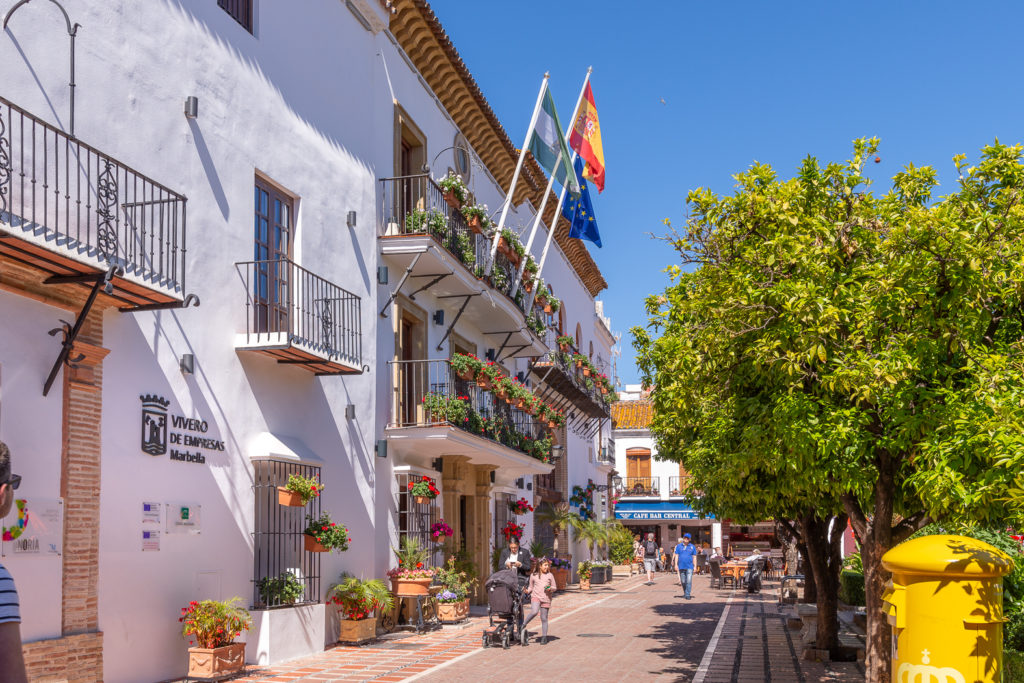
Marbella, Spain:
We begin our adventure in the popular town of Marbella, Spain. Nestled on the Alboran Sea in the heart of Spain’s Costa del Sol, Marbella is a mere 60kn (37mi) west of Malaga. It’s a charming town for a shopping day or to settle into for the winter. Marbella boasts of world-renowned beaches, vibrant night life, and a splendid old town. It’s Puerto Banús draws comparisons with the French Riviera, complete with super yachts, upscale boutiques, restaurants, and luxury sports cars that meet your gaze with every turn of the head.
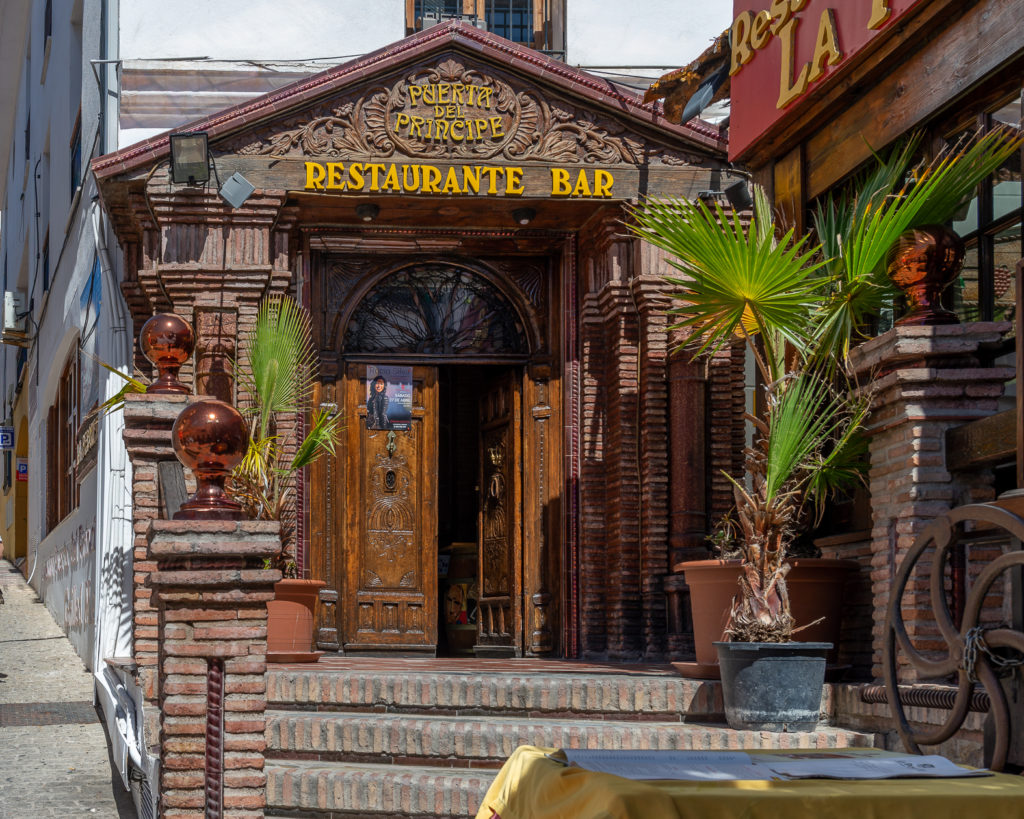
As we head out on the highway, we aim west on AP-7, skirting the coast until we reach exit 153 at the traffic circle in Estepone. Here we begin a northward trajectory on MA8300 toward our first picturesque stop of the day. Take your time and enjoy the scenery, its stunning. Shortly after passing through the village of Venta Garcia you will round a bend in the road and be treated to a spectacular view of the village of Casares. This whitewashed Spanish hill town is our first look at what appears to be hand stacked, whitewashed building blocks with its medieval fortress perched on top. Pictures taken here will evoke a flood of precious memories and bragging rights for years to come.
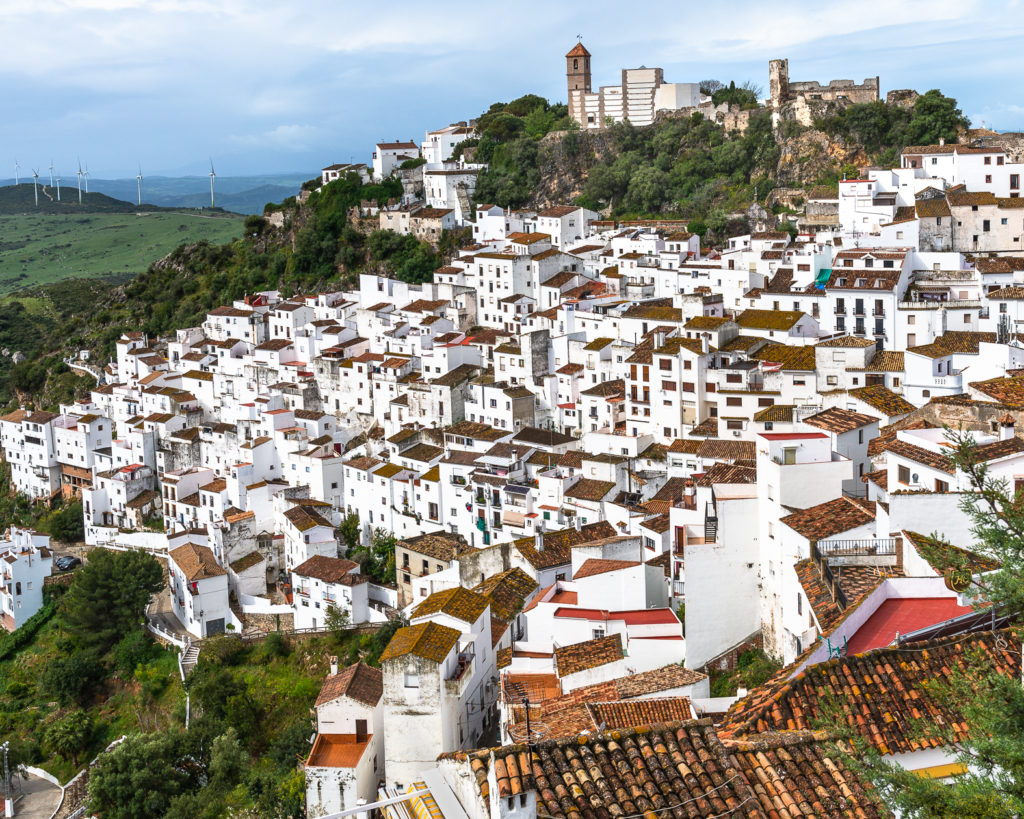
Casares is a favorite of the whitewashed Spanish hill towns:
Once you reach Casares, head for Plaza de España which is the main square. The square surrounds the neoclassical four-spout Carlos III fountain which has provided fresh water to this village square since 1785.
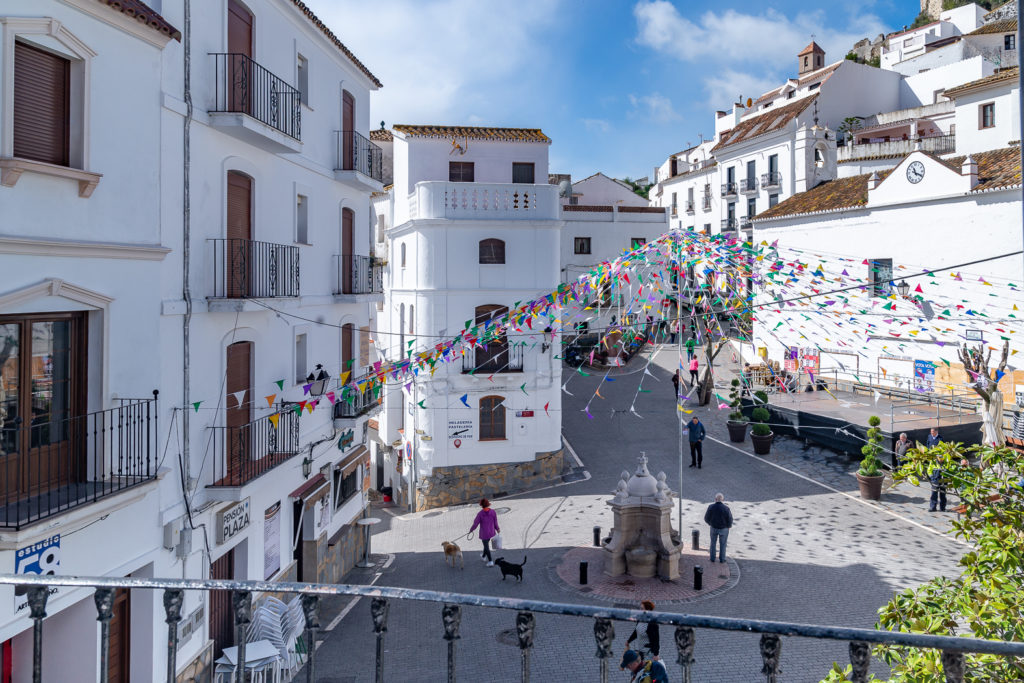
This quaint village of 3,000 residents is swathed in history and relics of Spain’s colorful past. However, today’s cafés, bars, and shops are a welcoming site to the inquisitive day tripper. Climb the stairs to the “La Bodeguito en Medio” and sit a spell while enjoying the view from the rooftop terrace and relaxing with a cocktail, authentic Spanish tapas, or a homestyle lunch or dinner.
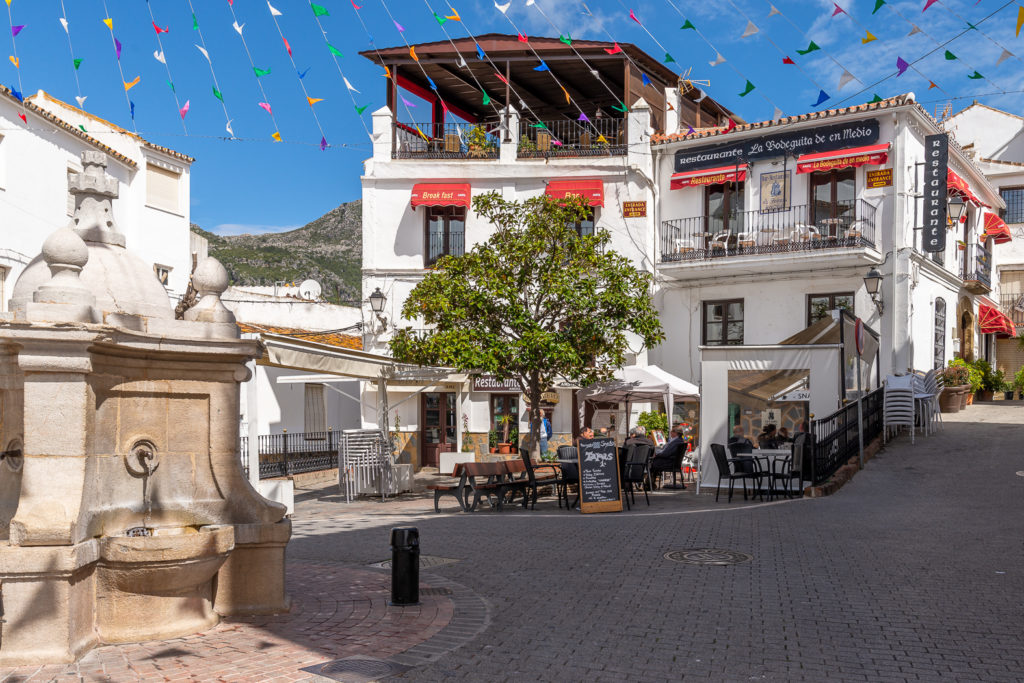
Once refreshed, stroll across the square and look up at the bust of Blas Infante. Known as the “father of Andalucía,” Blas was the Andalucía Nationalist leader who was born here on July 5th, 1885 and executed by Franco’s rebels at the start of the civil war. His birth house, now a museum and tourist office, is located around the corner at 55 Calle Carrera and is worth a visit.
Step out the door of the museum and stroll up the narrow street past the 17th century Iglesia de San Sebastian. Gaze up at its bell tower and façade while continuing up Calle Villa. Passing through Arco de la Villa archway you will emerge inside the castle walls. If you continue your climb to the top of the town, you will be 1,400ft above sea level and arrive at the Blas Infante Cultural Center which was inaugurated on July 5, 2010, the 125th anniversary of the birth of Blas Infante. The Cultural Center sits on the 16th-century Iglesia de la Encarnación church, which was built on an ancient mosque. Casares was one of the last Muslim strongholds during Spain’s occupation by the Moors.
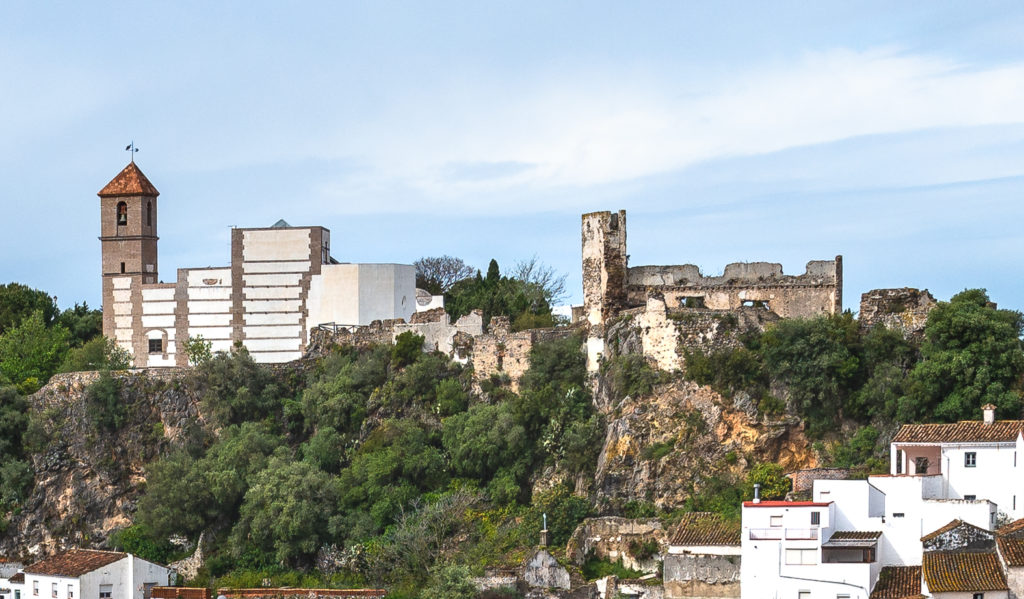
The views from the top of town are worth the climb in themselves. They include the village rooftops tumbling down the hillside below, birds of prey circling in the eternal sky above, and on a clear day the vista extends to the Rock of Gibraltar and beyond to the shores of Africa. If you feel you have the time and you are there within visiting hours, the cemetery leaves little to the imagination.
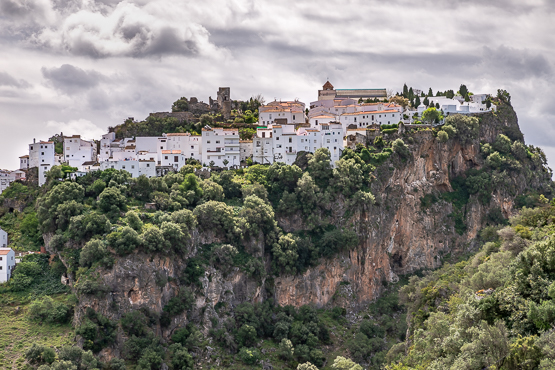
Once back at the car, we are ready for the next leg of our trip. We will continue north on A-7150 to A-377 for approximately 19km (11mi) which will take us 30min or so. We will venture past wind generators on the ridge where we can look back on the village of Casares. This leg of our trip leads us around the Sierra Crestellina, stopping to take in the breathtaking views from Mirador Ornitológico Sierra Crestelina, then on through some of Spain’s famous birding country and intoone of the lovely whitewashed spanish hill towns, Gaucin.
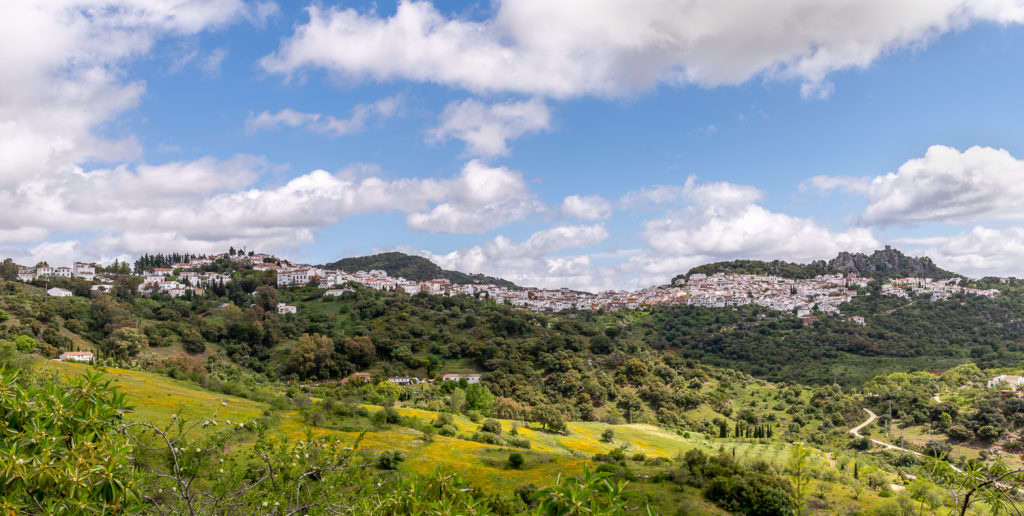
Gaucin. Spain:
This is one of the charming whitewashed Spanish hill towns of approximately 2,000 residents. With its narrow streets and tall buildings lining them, Gaucin is spread across two hills and the land between them. Overlooking the deep Genal River valley below, Gaucin is watched over by the imposing Sierra del Hacho mountain topped with the Castillo del Aguila (Eagle’s Castle).
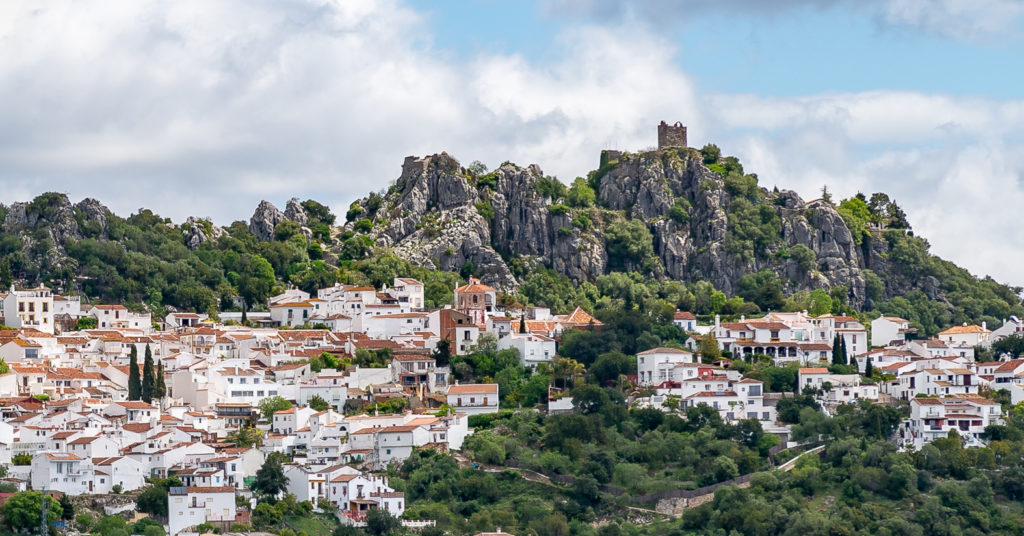
The Castle, now a convent, was built by the Romans and later occupied by the Arabs. As the Castle name infers it is common to see the skies above dappled with majestic eagles circling Above. Kestrels’ nests grace the walls of the convent. Like most of the Andalusian highlands, the area is a birdwatcher’s paradise and plaques are displayed throughout the village introducing both native and migrating birds. Referred to as the “balcony of the Ronda Mountains,” this quintessential Spanish, whitewashed, mountain village is known for its views of Gibraltar, the Strait of Gibraltar and Morocco, as well the panoramas offered up by the surrounding mountain scenery.
Set on a hillside overlooking the valley below is the baronial-style estate, Finca Buena Vista. Here retired Swedish media mogul Richard Enkvist pampers his award winning winery Enkvist Wines bottled under the apt label, Sueños (dreams).This magnificent vineyard cascades down the hill side being swallowed up by the lush Andalusian dreamscape. The wines are highlighted by the traditional Spanish Tempranillo, Cabernet Sauvignon, and my summer favorite, Petit Verdot. The winery is open to the public Monday – Friday during the season (1 March to 30 July / 1 September to 30 November). However, you must book by e-mail at info@bodegacezar.com or by phone +34 650 240 800, at least one week in advance.
“On the road again, just can’t wait to get on the road again,” those words were recorded by Willie Nelson in the fall of 1979 and make a great theme as we trek from one Spanish hill town to the next. We’re on the road again, headed east toward Ronda, snaking along byway A-369 with the next stop Algotocin.
Algotocin, Spain:
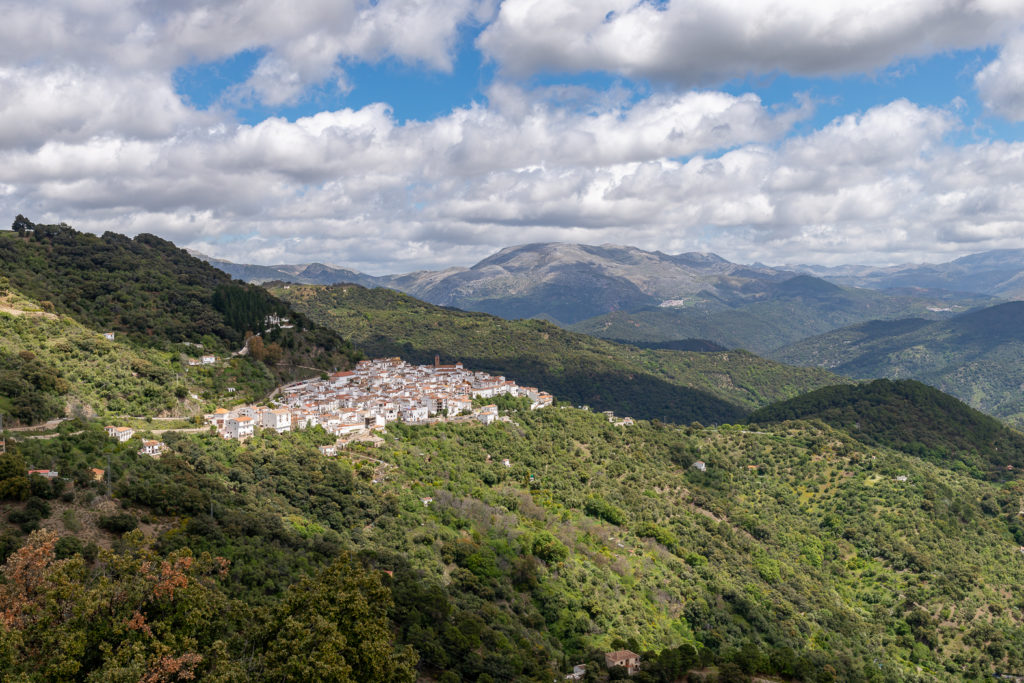
With less than 500 homes for its population of less than 1,000, Algatocin is an agricultural village with two pork processing plants located in the village. Parking is at a premium and the best way to see the village is to park in the lots adjoining A-369 and stroll its streets. You will pass through Plaza de la Alameda, which is highlighted by the San Antonio Fountain that has been flowing since the 17th century. Algatocin dates back as far as the Bronze age as supported by pottery unearthed in one of its nearby archeological digs. Be sure to visit the church of Ntra Sra del Rosario. This 17th century church was completed in 1614 and sits prominently on the site of what many believe was occupied by an Arab Castle. When we stopped for photos of the village from the road my initial thought as I spotted its blue tiled cupola was that of a minaret. However, upon closer examination it became apparent that it is a Christian church. The interior is well kept, and the statue of the Virgin Rosario is a standout. It was crafted from white silver sometime in the 18th century.
After a short time in this tiny village I’m singing with Willie, “just can’t wait to get on the road again.” After a quick bowl of hot gazpacho (a local tradition) and a cold drink in one of the local haunts, we’re on the road again, headed west to the smallest village in the region, Atajate.
Atajate, Spain:
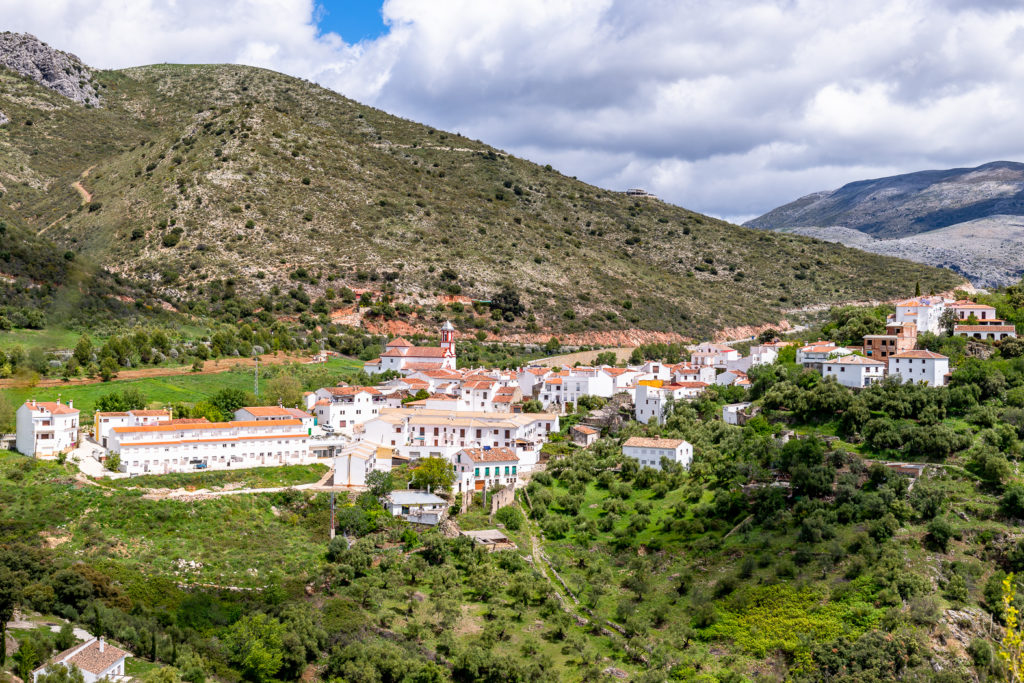
With only 150 residents the village of Atajate offers a delightful stroll through its cobbled streets. Unique to Atajate is the Open Museum of Wine. Here you can follow the wine making process, so dear to this region and village. As you walk, observe the written engravings, illustrations, and a collection of winemaking tools which includes an antique press. Before leaving the village a must stop is the church of San Jose or San Roque. This 17th century church was reworked in the 18th century and is an outstanding example of Baroque style architecture. As you leave the village on A-369 be sure to look back at the cascading orchard flowing from the town and disappearing into the woods, photographed from any angle, this town is a respectable representative of the white hill towns of Andalucía.
Ronda is the largest of our whitewashed Spanish hill towns:
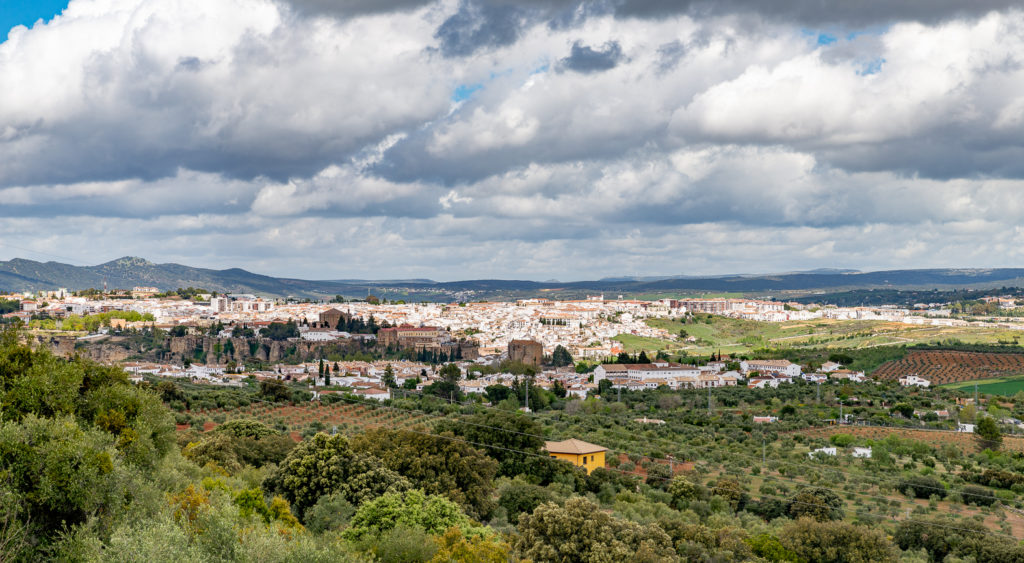
From here we leave the villages behind and head east to the city of Ronda. Ronda is the largest of the hilltop towns with a population of 34,000 people. It offers one of the most dramatic scenes as it is perched atop a deep gorge which separates its 15th century new town from old town. Ronda is full of shops, temples, taverns, restaurants, museums and amazing architecture. However, there are a few not to miss stops I want to highlight before we head back to our resting place in Marbella.
History Lesson for Ronda, Spain:
Ronda has a distinguished, long, and tragic history. Its earliest inhabitants left the rock paintings of Cueva de la Pileta which date form the Neolithic Age. It was first settled by the Celts in the 6th century BC. The old town dates from early Phoenician settlers who named it Acinipo, now referred to as Ronda la Vieja, Arunda, or Old Ronda. Through the years the inhabitants of this “city”, a title bestowed on Ronda by Julius Caesar, have been through many wars and been ruled by many groups. It was taken from the Romans by a Suebi group of German tribes, only to be then recaptured by the Romans. The Visigoths seized the city and ruled until in 713 it fell to the Berbers who brought in Islamic rule until the Marquis of Cádiz conquered and Christianized it in 1845. While each invading army plundered and brutalized the inhabitants, Ronda suffered deeply through the Spanish Inquisition. During the Napoleonic invasion of the 19th century it saw its population decimated, being reduced from 15,000 to less than 5,000 in three years. The scene in chapter 10 of Hemingway’s For Whom the Bell Tolls, is thought to describe the 1936 execution of Fascist sympathizers being thrown off a cliff in the city of Ronda. A bust of Hemingway and story of the chaos is in Paseo de Blas Infante, which is sandwiched between Plaza de Toros, one of the oldest bullrings in use today, and the cliffs from where the sympathizers are believed to have been executed.
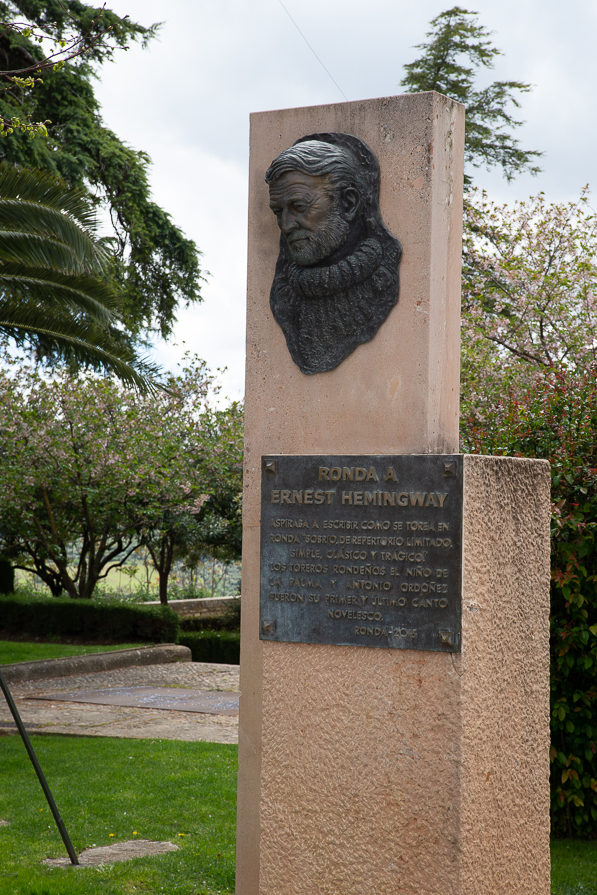
Todays Ronda is a wonderland for adventure seeking tourists. With too many significant options for the time we have, we will limit ourselves to four main sites and plan a return trip for a day dedicated to the delights of this principal city among Spain’s hill towns. Upon your arrival in Ronda set your GPS for Plaza del Socorro where you will find ample underground parking. Exit the plaza from the south east corner and proceed south west for a leisurely stroll down Carrerra Espinal. This is a lovely pedestrian avenue full of shops, delis, markets, and wine. Carrerra Espinal will dead end at Plaza de Toros home of the oldest bullring in Spain. It was built in 1785 by the architect Jose Martin.
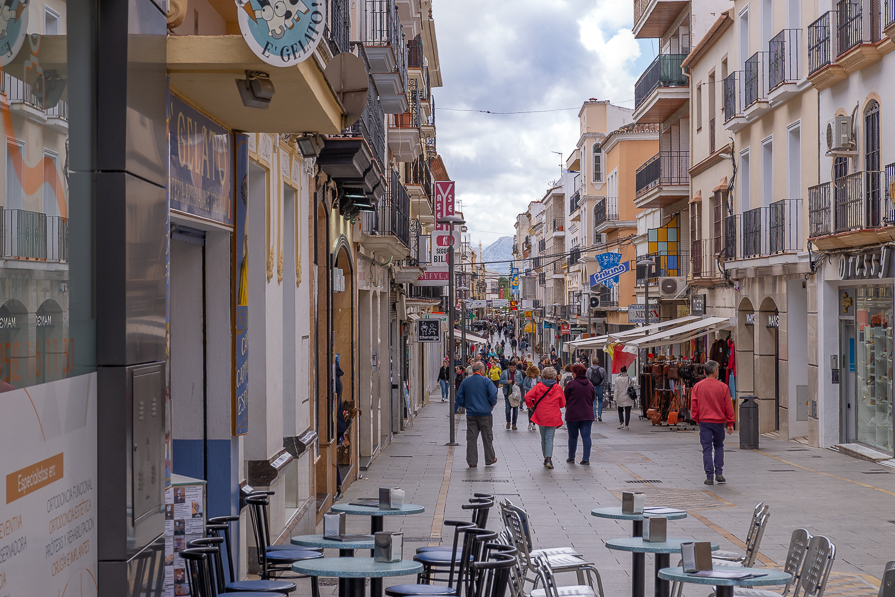
While bullfighting is certainly not my thing and I’d never watch a real bullfight, it’s an integral part of Spanish history and culture and is considered a national treasure by many.
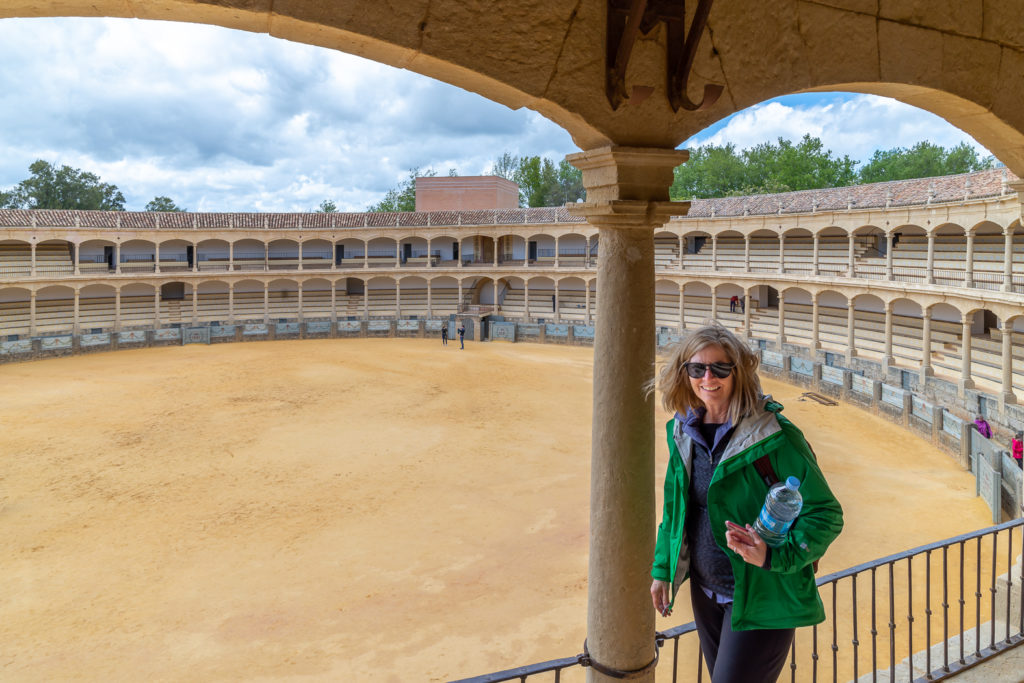
Pay the admission and step into the arena which is now a museum to the legendary Pedro Romero who dismounted from his horse and founded the Rondeño style of bullfighting where the matador stands and faces the bull, man against beast.
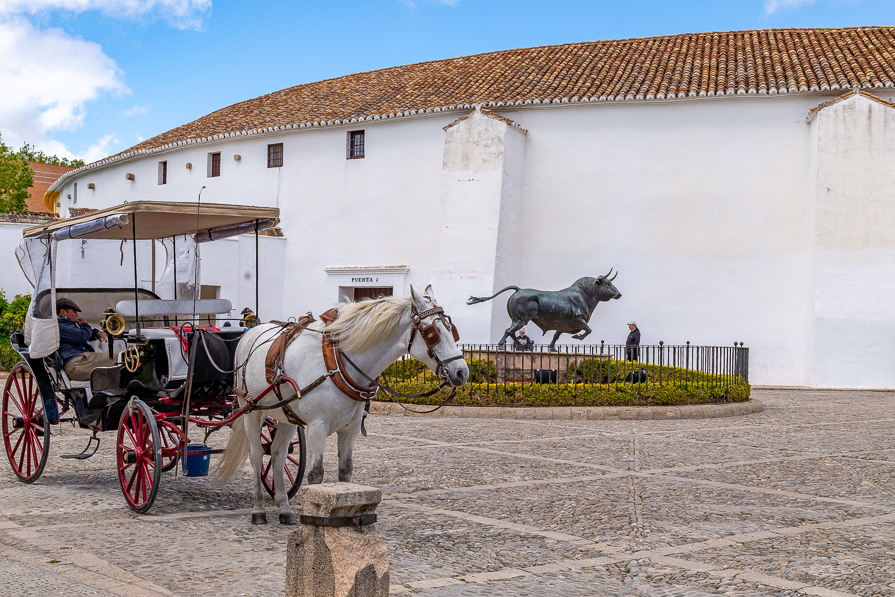
Emerging from the museum you can cross the plaza and visit Ronda’s official Visitors Center before strolling through the grounds of Paseo de Blas Infante. Here you are greeted by monuments to Ernest Hemingway and Orson Welles, as well as the Japanese artist Miki Haruta. This is a tranquil park which edges the cliff where you will encounter breathtaking views of the gorge below, if you don’t like heights don’t look down. Superb panoramas of the mountains lie to the west.
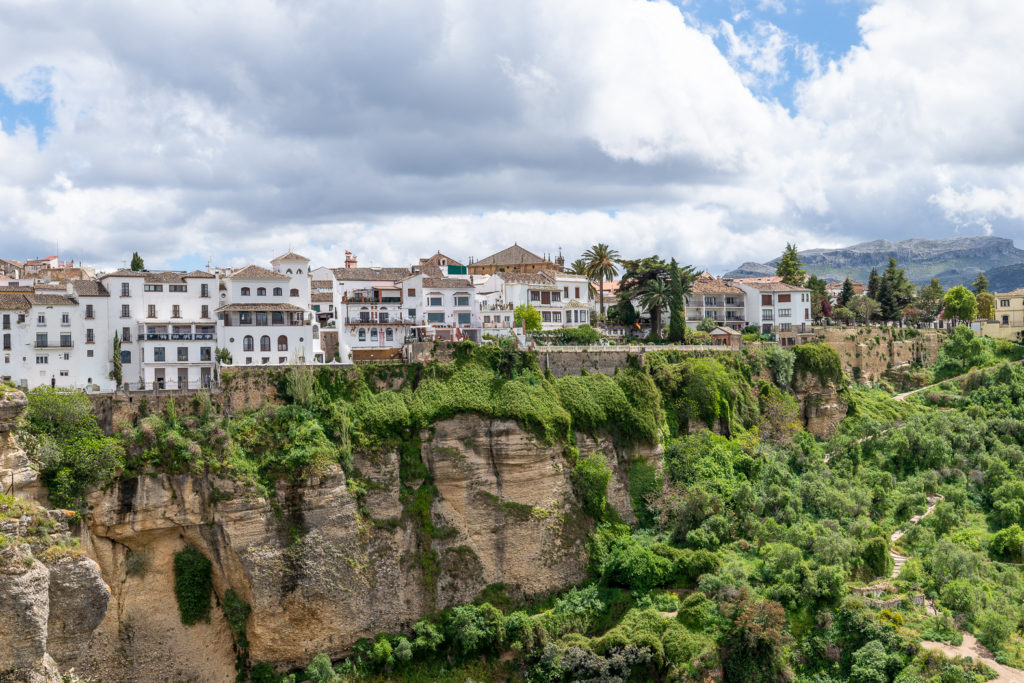
The walkway celebrating Welles runs south, behind the modern Parador hotel and past the original and still operational town clock over Plaza de España. It is a short saunter from the bullring to the Puente Nuevo (the New bridge), built by Jose Martin Aldehuela – the same architect as the bullring.
Puente Nuevo is the highlight of a trip to Ronda and the walk from the bullring will confirm for you why Wells and Hemingway found Ronda so endearing. Spanning the 120-metre (390 ft) deep El Tajo gorge cut by the Guadalevín River, the New Bridge is one of the most photographed sites in Spain. Completed in 1793, it connects La Ciudad, the old Moorish quarter with El Mercadillo, the newer part of town. This amazing feat of architecture took 40 years to build and cost 50 workers their lives. The views from the bridge and observation points of both sides of the gorge will fill any photo album with highlights.
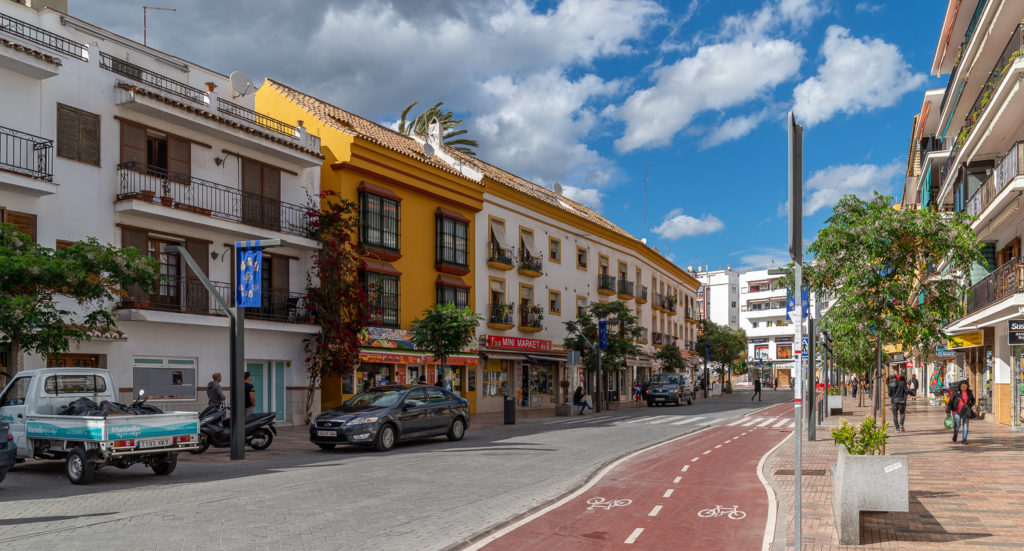
After picking up your car at Plaza del Socoro leave town via Calle Arminan. This avenue leads you on a tour of the Moorish quarter with its picturesque architecture. Make a short stop at Puerta de Almocábar, the arched stone gate which in the 13th century was the main gateway to the castle. From here we depart Ronda via A-6300 to A-397 for a pleasant one-hour drive back to our starting point in Marbella.
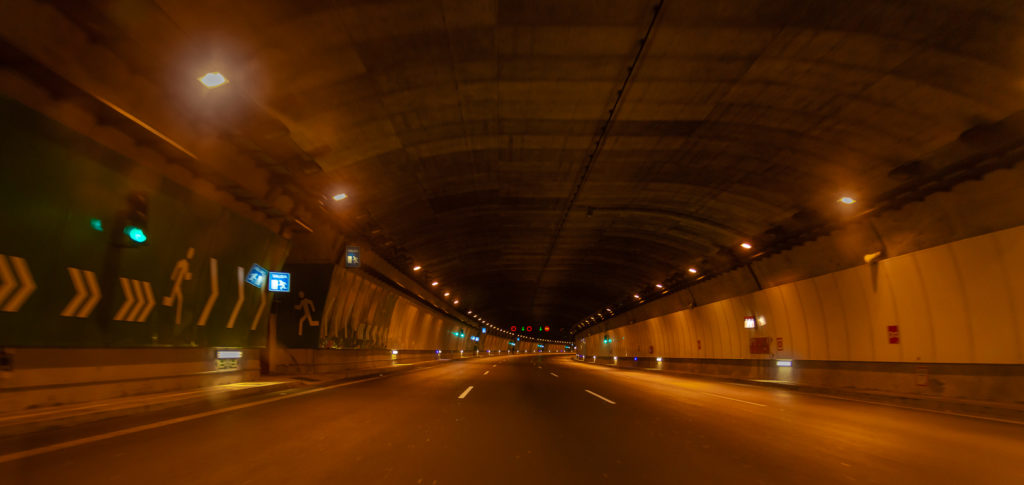
No comments yet.